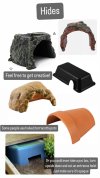Littleredfootbigredheart
Well-Known Member
Hello there!
In this thread I’m going to include some information on an effective example of a starter enclosure for a red foot/cherry head😊
Care advice for these guys is painfully behind, fb pages, YouTube, pet stores, they’re all repeating the same outdated advice, this forum is made of people who have spent years finding the best ways to care for them that actually result in healthy tortoise, I’ve taken the knowledge of these lovely folks and applied it into making this thread.
I know it looks a lot to go over, I like to make sure all bases are covered, I’m happy to break down any information as and where needed, just ask!
I’m going to cover the types of equipment to use, how to maintain humidity, and a cost effective way for you to get a suitable sized enclosure, hopefully it helps inspire some ideas🙂
Some of the equipment examples will vary from location to location with brands etc, however with the indoor UV, the examples shown are generally the only two brands you’ll want to go for. Cheaper alternatives are unreliable and sometimes dangerous. I’m from the uk so some of my examples reflect that.
When a hatchling, they do best in a closed chamber set up to better control the temperature and humidity, I would never recommend housing a hatchling outside of enclosed chamber, even if in a naturally humid climate, it can be difficult to mimic the humidity needed for a hatchling indoors without a top.
If using a light emitting heat source it should be an incandescent floodlight(examples attached)on a 12 hour timer, using a CHE(ceramic heat emitter) for night heat.
However I think ceramics as a heat source are more suited to red foot’s and far less desiccating on their shells.
Red foot’s don’t necessarily need a ‘basking area’ they aren’t typically a basking species coming from the forest floor(some do though, it depends on the individual) there’s no need for a ‘cooler end’ and ‘warmer end’ with these guys, aim for an overall ambient temperature range of 80-86(82-84 being optimal)temps shouldn’t ever be going below 80 all over both night&day.
Personally we rely on CHE’s(ceramic heat emitters) as our heat source 24/7, on thermostats, they’re a non light emitting bulb and I think you’ll find it easiest sticking to these as your heat source to keep your temps nice and stable. When using multiple hang them equal distance to distribute the heat more evenly.
Large wide(not deep) domes with ceramic fittings will help project the heat down, but don’t rely on the clamps that come with them, always hang them securely.
You can then hang some ambient lighting on a 12hour timer, it can being either a led strip or a led bulb in 5000k-65000k colour range. Create lots of shady areas with safe plants and hides, red foots don’t like things too bright.
Any indoor UV needs to be provided as a t5 tube fluorescent light, the compact or all in one bulbs either are too harsh creating uv hot spots that can damage their eyes, or are far too weak. I’ve attached the brands to go for and examples of stands to mount them. The Arcadia proT5 kit12% comes with the reflector fitting, the reptisun needs it buying separately.
However if you’re able to get them out for a few hours of natural sunlight daily, don’t worry about the uv. Just make sure it’s not too warm or cold, and they’re in a secure run with lots of shade.
Your little one will need around 80%+ humidity 24/7 to thrive, the right substrate and a good closed chamber set up goes a long way in making this work. You’ll constantly struggle with an open top.
We personally keep our red foot on orchid bark, we focus on the under layer of the substrate being nice and damp to create the humidity, then the top layer being dry, the trouble with constantly spraying is, one, it can only last so long, and two, keeping that top layer constantly damp will leave them more prone to a fungal infection, avoid misters/foggers for this reason too, the humidifiers can also make the air too wet leading to respiratory issues. To stop that top layer getting a little too dry (you don’t want dusty substrate) we mix it now n then, which also helps gives a humidity boost without extra water🙂to maintain our humidity we simply pour some lukewarm water into the corners of the substrate, not loads! Just enough to dampen the whole under layer. You can keep an eye on your monitors&substrate to do the pours as and when needed, which in a good closed chamber set up, you shouldn’t have to do loads😊
Substrate wise never add any kind of moss, that’s something some stores think nothing of, but it can actually cause lethal impactions.
Don’t use any top soils or anything mixed with sand. Trouble with top soil is, unless composted yourself, there’s no telling what plants has gone into it, could be something toxic. Sand is an irritant/impaction risk.
Safe substrate options are coco coir, damp and packed down by hand as a base, with orchid bark on top, or forest floor on top, or just the orchid bark/ forest floor on their own.
Size wise I’d generally recommend you make your own base to go as big as you possibly can for the space you have, this tortoise full grown is going to need a large, secure outdoor space if your climate is good for it, if not, a room sized enclosure is going to be needed as an adult.
You’ll still have so many people recommending far too small a set up for adults, Don’t think they can get away with smaller if allowed to free roam, I’d highly discourage indoor free roams, being away from their heat source means they’re being exposed to temperatures that are too low quite often, smooth surfaces like laminate flooring will wreak absolute havoc on their hip joints over time.
There’s just numerous reasons it isn’t a good idea, harmful floor cleaners, foreign objects being swallowed, getting stuck under things they shouldn’t like shelving or sofas, low temperatures, no uv, getting hit by doors, one member has mentioned they knew someone who’s tort got their head crushed in a door jam😣, flipping hazards, smooth services, the list goes on and is endless.
They feel most comfortable and safe in a space that best mimics their natural environment, our homes don’t.
They don’t have reasoning skills to understand why they are uncomfortable somewhere, they just want to explore, which is why an appropriate size is so important, it helps build their muscle strength and aids in digestion. They’d walk miles in the wild!
Even outdoor free roaming isn’t a good idea for safety, they should always be somewhere secure.
A good cost effective closed chamber starter set up would be a greenhouse style enclosure by making your own large base out of a safe material, or even use a garden bed frame! For both these options line with some cheap pond liner, the lining going up the sides too and make sure those sides are high enough. Then simply secure a greenhouse topper on top, if you can’t find an exact fit, place it over like the one with the white base in one of the photos, I’d place some lining under the cover and base though to avoid condensate getting on your floor.
Some people even hang their lighting and heat from the greenhouse frame!(if it feels sturdy enough) Simply wrap the wire around for the height you need(check with a temperature gun/add thermostats, roughly 18-21 inches from top of tortoises shell for the uv) and secure with cable ties and chains. Or you could make your own stands out of safe timber, again I’ll attach some pics.
For a water dish a large terracotta saucer, sitting flush with the substrate is safest, they have grip in the event the tortoise flips, most pet store options are a hazard😕
Id definitely recommend a temp gun to make sure your monitors are reading correctly.
Have digital monitors that measure both temp and humidity, the gauge ones are inaccurate.
Ignore whatever else is in the photos in the enclosures, they’re just to give you an idea😊and ignore that some of the fittings in the pics are floodlights, ches will work great, just examples on how to hang your bulbs👍
Also as this is a closed chamber set up, the materials like the lining and cover will need time to off gas, I’d leave it all running up to a week, or until there is no odour, if there’s no smell, it’s safe for use🐢💚
Whilst they’re a baby, do daily half hour soaks💦adults can have one 2/3 times a week.


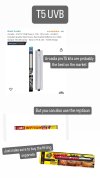
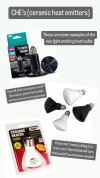
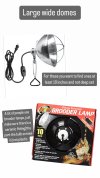



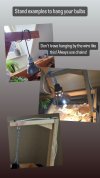

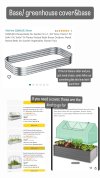
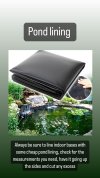

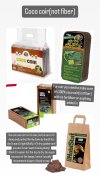
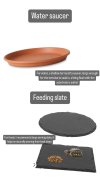
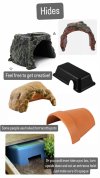



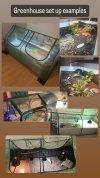


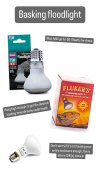
Remember basking isn’t necessary though!
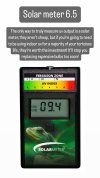
Now let’s talk diet! These beautiful unique tortoises have different dietary requirements from most tortoises, below is a list of things we personally feed ours! Please feel free to add your own safe additions, always looking for new suggestions😊
These are some greens to feed(bear in mind the lettuce isn’t the most nutritional but fine to add as part of a varied diet);
Lambs lettuce
Romaine
Red leaf lettuce
Frisèe lettuce
Endive(chicory)
Spring greens
Kale
Rocket
Cress on occasion
The odd Brussel sprout on occasion
There’s also plenty of different weeds you can add! Providing you’re sourcing them from an area that is free of any harmful chemicals like pesticides and fertiliser, so be WARY! There’s lots of lookalikes that can be toxic, it might be best to grow your own from seeds online. We add dandelions and broadleaf plantain, I’ll add a link below you might find useful to look through🙂
Now let’s talk fruit! We remove any pips/seed/stones that are either toxic or a chocking hazard, so for my list, we’d remove the mango stone, plum stone, peach stone, nectarine stone, cherry stones(chocking hazard!), apricot stones, appel&pear seeds(toxic)
Ones we feed more regularly(but rotate cause variety is key):
Mango
Papaya
Pineapple
Raspberries
Melon
Strawberries
Watermelon(not super nutritional but a good hydration boost)
Plum
Peach
Nectarines
Cherries
Apricot
Blueberries
Figs
Guava
Prickly pear
Ones we feel less regularly:
Appel
Banana
Blackberries
Grapes
Pear
Those last ones are more of a treat basis. You can also try cherry tomatoes on occasion but not often.
We also sometimes grate a bit of carrot on our red foots food(not a lot) or some courgette, you can also add bell peppers on occasion, and they’ll also enjoy some mushroom once a week or so!
Hope this helps give you some ideas for variety🙂 we try not to give ours too much of just the one type of fruit in any given week, however she gets papaya pretty much daily, it makes up a large majority of their diet in the wild so definitely get your hands on some!
Also they’ll need some protein every 7-10 days, we personally give ours a head sized protein of steamed chicken breast, or a mouse we defrost from the reptile shop.
Calcium power can be added on 3 feeds a week.
Hope all this helps, any further questions, please ask away!🥰
In this thread I’m going to include some information on an effective example of a starter enclosure for a red foot/cherry head😊
Care advice for these guys is painfully behind, fb pages, YouTube, pet stores, they’re all repeating the same outdated advice, this forum is made of people who have spent years finding the best ways to care for them that actually result in healthy tortoise, I’ve taken the knowledge of these lovely folks and applied it into making this thread.
I know it looks a lot to go over, I like to make sure all bases are covered, I’m happy to break down any information as and where needed, just ask!
I’m going to cover the types of equipment to use, how to maintain humidity, and a cost effective way for you to get a suitable sized enclosure, hopefully it helps inspire some ideas🙂
Some of the equipment examples will vary from location to location with brands etc, however with the indoor UV, the examples shown are generally the only two brands you’ll want to go for. Cheaper alternatives are unreliable and sometimes dangerous. I’m from the uk so some of my examples reflect that.
When a hatchling, they do best in a closed chamber set up to better control the temperature and humidity, I would never recommend housing a hatchling outside of enclosed chamber, even if in a naturally humid climate, it can be difficult to mimic the humidity needed for a hatchling indoors without a top.
If using a light emitting heat source it should be an incandescent floodlight(examples attached)on a 12 hour timer, using a CHE(ceramic heat emitter) for night heat.
However I think ceramics as a heat source are more suited to red foot’s and far less desiccating on their shells.
Red foot’s don’t necessarily need a ‘basking area’ they aren’t typically a basking species coming from the forest floor(some do though, it depends on the individual) there’s no need for a ‘cooler end’ and ‘warmer end’ with these guys, aim for an overall ambient temperature range of 80-86(82-84 being optimal)temps shouldn’t ever be going below 80 all over both night&day.
Personally we rely on CHE’s(ceramic heat emitters) as our heat source 24/7, on thermostats, they’re a non light emitting bulb and I think you’ll find it easiest sticking to these as your heat source to keep your temps nice and stable. When using multiple hang them equal distance to distribute the heat more evenly.
Large wide(not deep) domes with ceramic fittings will help project the heat down, but don’t rely on the clamps that come with them, always hang them securely.
You can then hang some ambient lighting on a 12hour timer, it can being either a led strip or a led bulb in 5000k-65000k colour range. Create lots of shady areas with safe plants and hides, red foots don’t like things too bright.
Any indoor UV needs to be provided as a t5 tube fluorescent light, the compact or all in one bulbs either are too harsh creating uv hot spots that can damage their eyes, or are far too weak. I’ve attached the brands to go for and examples of stands to mount them. The Arcadia proT5 kit12% comes with the reflector fitting, the reptisun needs it buying separately.
However if you’re able to get them out for a few hours of natural sunlight daily, don’t worry about the uv. Just make sure it’s not too warm or cold, and they’re in a secure run with lots of shade.
Your little one will need around 80%+ humidity 24/7 to thrive, the right substrate and a good closed chamber set up goes a long way in making this work. You’ll constantly struggle with an open top.
We personally keep our red foot on orchid bark, we focus on the under layer of the substrate being nice and damp to create the humidity, then the top layer being dry, the trouble with constantly spraying is, one, it can only last so long, and two, keeping that top layer constantly damp will leave them more prone to a fungal infection, avoid misters/foggers for this reason too, the humidifiers can also make the air too wet leading to respiratory issues. To stop that top layer getting a little too dry (you don’t want dusty substrate) we mix it now n then, which also helps gives a humidity boost without extra water🙂to maintain our humidity we simply pour some lukewarm water into the corners of the substrate, not loads! Just enough to dampen the whole under layer. You can keep an eye on your monitors&substrate to do the pours as and when needed, which in a good closed chamber set up, you shouldn’t have to do loads😊
Substrate wise never add any kind of moss, that’s something some stores think nothing of, but it can actually cause lethal impactions.
Don’t use any top soils or anything mixed with sand. Trouble with top soil is, unless composted yourself, there’s no telling what plants has gone into it, could be something toxic. Sand is an irritant/impaction risk.
Safe substrate options are coco coir, damp and packed down by hand as a base, with orchid bark on top, or forest floor on top, or just the orchid bark/ forest floor on their own.
Size wise I’d generally recommend you make your own base to go as big as you possibly can for the space you have, this tortoise full grown is going to need a large, secure outdoor space if your climate is good for it, if not, a room sized enclosure is going to be needed as an adult.
You’ll still have so many people recommending far too small a set up for adults, Don’t think they can get away with smaller if allowed to free roam, I’d highly discourage indoor free roams, being away from their heat source means they’re being exposed to temperatures that are too low quite often, smooth surfaces like laminate flooring will wreak absolute havoc on their hip joints over time.
There’s just numerous reasons it isn’t a good idea, harmful floor cleaners, foreign objects being swallowed, getting stuck under things they shouldn’t like shelving or sofas, low temperatures, no uv, getting hit by doors, one member has mentioned they knew someone who’s tort got their head crushed in a door jam😣, flipping hazards, smooth services, the list goes on and is endless.
They feel most comfortable and safe in a space that best mimics their natural environment, our homes don’t.
They don’t have reasoning skills to understand why they are uncomfortable somewhere, they just want to explore, which is why an appropriate size is so important, it helps build their muscle strength and aids in digestion. They’d walk miles in the wild!
Even outdoor free roaming isn’t a good idea for safety, they should always be somewhere secure.
A good cost effective closed chamber starter set up would be a greenhouse style enclosure by making your own large base out of a safe material, or even use a garden bed frame! For both these options line with some cheap pond liner, the lining going up the sides too and make sure those sides are high enough. Then simply secure a greenhouse topper on top, if you can’t find an exact fit, place it over like the one with the white base in one of the photos, I’d place some lining under the cover and base though to avoid condensate getting on your floor.
Some people even hang their lighting and heat from the greenhouse frame!(if it feels sturdy enough) Simply wrap the wire around for the height you need(check with a temperature gun/add thermostats, roughly 18-21 inches from top of tortoises shell for the uv) and secure with cable ties and chains. Or you could make your own stands out of safe timber, again I’ll attach some pics.
For a water dish a large terracotta saucer, sitting flush with the substrate is safest, they have grip in the event the tortoise flips, most pet store options are a hazard😕
Id definitely recommend a temp gun to make sure your monitors are reading correctly.
Have digital monitors that measure both temp and humidity, the gauge ones are inaccurate.
Ignore whatever else is in the photos in the enclosures, they’re just to give you an idea😊and ignore that some of the fittings in the pics are floodlights, ches will work great, just examples on how to hang your bulbs👍
Also as this is a closed chamber set up, the materials like the lining and cover will need time to off gas, I’d leave it all running up to a week, or until there is no odour, if there’s no smell, it’s safe for use🐢💚
Whilst they’re a baby, do daily half hour soaks💦adults can have one 2/3 times a week.























Remember basking isn’t necessary though!

Now let’s talk diet! These beautiful unique tortoises have different dietary requirements from most tortoises, below is a list of things we personally feed ours! Please feel free to add your own safe additions, always looking for new suggestions😊
These are some greens to feed(bear in mind the lettuce isn’t the most nutritional but fine to add as part of a varied diet);
Lambs lettuce
Romaine
Red leaf lettuce
Frisèe lettuce
Endive(chicory)
Spring greens
Kale
Rocket
Cress on occasion
The odd Brussel sprout on occasion
There’s also plenty of different weeds you can add! Providing you’re sourcing them from an area that is free of any harmful chemicals like pesticides and fertiliser, so be WARY! There’s lots of lookalikes that can be toxic, it might be best to grow your own from seeds online. We add dandelions and broadleaf plantain, I’ll add a link below you might find useful to look through🙂
The Tortoise Table - Home
The Tortoise Table plant database and resource site for Tortoise owners
www.thetortoisetable.org.uk
Now let’s talk fruit! We remove any pips/seed/stones that are either toxic or a chocking hazard, so for my list, we’d remove the mango stone, plum stone, peach stone, nectarine stone, cherry stones(chocking hazard!), apricot stones, appel&pear seeds(toxic)
Ones we feed more regularly(but rotate cause variety is key):
Mango
Papaya
Pineapple
Raspberries
Melon
Strawberries
Watermelon(not super nutritional but a good hydration boost)
Plum
Peach
Nectarines
Cherries
Apricot
Blueberries
Figs
Guava
Prickly pear
Ones we feel less regularly:
Appel
Banana
Blackberries
Grapes
Pear
Those last ones are more of a treat basis. You can also try cherry tomatoes on occasion but not often.
We also sometimes grate a bit of carrot on our red foots food(not a lot) or some courgette, you can also add bell peppers on occasion, and they’ll also enjoy some mushroom once a week or so!
Hope this helps give you some ideas for variety🙂 we try not to give ours too much of just the one type of fruit in any given week, however she gets papaya pretty much daily, it makes up a large majority of their diet in the wild so definitely get your hands on some!
Also they’ll need some protein every 7-10 days, we personally give ours a head sized protein of steamed chicken breast, or a mouse we defrost from the reptile shop.
Calcium power can be added on 3 feeds a week.
Hope all this helps, any further questions, please ask away!🥰
